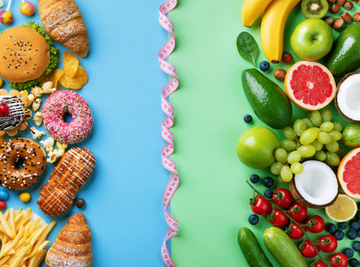What is Glycaemic Index?
Glycaemic Index (GI) measures the carbohydrate quality, meaning how much a carbohydrate food will affect blood sugar levels. GI is a ranking from 0-100 which tells us how quickly carbohydrates are released into the blood stream.
Low GI carbohydrates are broken down and metabolised more slowly and are released over an extended period of time and have a lower effect on blood glucose levels (BGL’s). Look out for the Glycaemic Index Foundation logo to assist with identifying some Low GI products. All of Be Fit Food’s carbohydrates containing ingredients used in the meals are Low GI.
Examples of low GI foods: wholegrain breads, oats, apples, legumes such as chickpeas, kidney beans, yoghurt
High GI carbohydrates are broken down and released into the blood stream very quickly and therefore raise BGLs much higher and more rapidly. In the 2 hours after consuming a high GI meal, the body stimulates insulin release and stimulate storage of glycogen and fats.
Examples of high GI foods: white bread, refined cereals, most potatoes, most processed snack foods, rice crackers
There are several factors that influence the GI of a food including the type of starches and sugars in the food, and how it has been processed or cooked. The amount, if any, of fat, protein or fibre in the food as well as the acidity of the food can help to slow the digestion and stomach emptying reducing the foods impact on blood sugar levels. This means that is not often that easy to guess a foods’ glycaemic index.
What is Glycaemic Load?
Glycaemic index tells only part of the story. What it doesn’t tell you is how high your blood sugar could go when you actually eat the food, which is partly determined by how much carbohydrate is in an individual serving.
Glycaemic load examines the total impact of a carbohydrate food on postprandial (post meal) blood glucose levels as it takes into account the amount (in grams) of carbohydrate in a food.
Glycaemic Load = (GI x grams of carbohydrates available in food) /100
For example: Watermelon has a high glycaemic index (80). But a serving of watermelon has so little carbohydrate (6 grams) that its glycaemic load is only 5.
In comparison, a small potato has a GI of 80 and it contains 15 g of carbohydrate. Therefore, its GL is 12. Meaning the baked potato will have more than double the effect on blood glucose levels than watermelon.
How can these concepts assist with weight loss?
Low GI and GL foods can assist with weight control as they will help to keep you full for longer, manage appetite and lead to consuming less overall energy.
Low GI and GL diets have also been shown to reduce fasting insulin levels, improve insulin resistance and B-cell function. A low GI has been found to be more effective for losing weight in obese people, with hyperinsulinemia (high fasting insulin levels) compared to a high GI, energy-matched diet.
At Be Fit Food, we pride ourselves on the Low GI nature of our weight loss meals. This along with a 1:1 protein to carbohydrate ratio, ensures that meals are filling and achieve satiety, assisting with stabilising blood sugar levels and even drastically decreasing blood sugar levels in individuals with Type 2 Diabetes.
1.The University of Sydney. About Glycemic Index: measuring the GI. October 12, 2015. Available at: http://www.glycemicindex.com/about.php. Accessed 17/1/17.
2.Ludwig DS. The glycemic index: physiological mechanisms relating to obesity, diabetes, and cardiovascular disease. JAMA. 2002;287(18):2414-2423. (PubMed)
3.Esfahani, A., Wong, J.M.W., Mirrahimi, A., Villa, C.R., Kendall, C.W.C. (2011).The Application of the Glycemic Index and Glycemic Load in Weight Loss: A Review of the Clinical Evidence, Life, 63, 1, 7-13.





